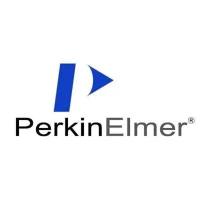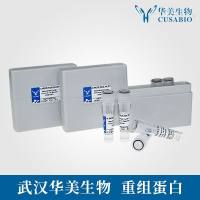The Combined Use of the Thermofluor Assay and ThermoQ Analytical Software for the Determination of Protein Stability and Buffer Optimization as an Aid
互联网
- Abstract
- Table of Contents
- Materials
- Figures
- Literature Cited
Abstract
The Thermofluor assay, also referred to as a thermal shift assay or differential scanning fluorescence (DSF), is a fast and simple method that is based upon high?throughput measurements of protein stability. The Thermofluor method can be performed on nearly all qPCR machines, meaning no special instrumentation is necessary, and can be used to validate the quality of protein preparations, screen for ligands or cofactors, and discover buffers and additives that maximize protein stability. This unit describes how to set up a Thermofluor method on several common models of qPCR instruments, how to prepare the samples for the assay, and how to run and analyze the resulting data. The unit also describes a 96?well screen to determine optimal buffer conditions for protein stability, which may assist in protein crystallization, and details the use of custom software, developed specifically for the analysis of data from Thermofluor screens. Curr. Protoc. Mol. Biol. 94:10.28.1?10.28.15. © 2011 by John Wiley & Sons, Inc.
Keywords: Thermofluor; high?throughput screening; crystallization; differential scanning fluorescence
Table of Contents
- Introduction
- Basic Protocol 1: Preparation of a Simple Thermofluor Assay Experiment
- Basic Protocol 2: Preparation of a Thermofluor Assay for Buffer Optimization
- Alternate Protocol 1: Preparation of a 96‐Well Thermofluor Screen to Discover Additives that Increase Protein Stability
- Basic Protocol 3: Preparation and Performance of the Thermofluor Assay on a qPCR Machine
- Basic Protocol 4: Data Analysis of a Simple Thermofluor Assay Using ThermoQ Software
- Basic Protocol 5: Analysis of Data from a Buffer Optimization Experiment Using ThermoQ Software
- Commentary
- Literature Cited
- Figures
Materials
Basic Protocol 1: Preparation of a Simple Thermofluor Assay Experiment
Materials
Basic Protocol 2: Preparation of a Thermofluor Assay for Buffer Optimization
Materials
Alternate Protocol 1: Preparation of a 96‐Well Thermofluor Screen to Discover Additives that Increase Protein Stability
Basic Protocol 3: Preparation and Performance of the Thermofluor Assay on a qPCR Machine
Materials
Basic Protocol 4: Data Analysis of a Simple Thermofluor Assay Using ThermoQ Software
Materials
Basic Protocol 5: Analysis of Data from a Buffer Optimization Experiment Using ThermoQ Software
Materials
|
Figures
-
Figure 10.28.1 A simple Thermofluor assay comparing three homologous proteins. Only the human protein exhibits a satisfactory melting curve featuring low initial fluorescence and a sigmoidal shape indicative of a protein unfolding transition. It may be of interest to protein crystallographers that only the human protein yielded diffraction‐quality crystals. View Image -
Figure 10.28.2 Figure 1TQ showing raw fluorescence traces obtained in each of the 96 wells of the qPCR microplate during the Thermofluor assay. View Image -
Figure 10.28.3 Figure 2TQ showing smoothed fluorescence traces as in Figure 1TQ . View Image -
Figure 10.28.4 Figure 3TQ showing the derivative of the melting traces. The maximum value represents the midpoint of the unfolding transition, or Tm . Curves shifted the furthest to the right represent conditions in which the protein is the most stable. Ideal traces in this figure will have a symmetric, sharp, and rightward‐shifted peak. View Image -
Figure 10.28.5 Figure 4TQ showing the overview of the software‐determined Tm values for all wells of a 96‐well microplate. Wells with the highest Tm values feature the hottest (deep red) colors, while wells with the lowest Tm s have the coolest (deep blue) colors. View Image -
Figure 10.28.6 Layout of the PACT screen and sample data. The PACT screen is a 96‐condition grid‐based screen, which is laid out in such a way as to allow the systematic evaluation of pH, cations, and anions. When used in conjunction with the Thermofluor assay, it allows rapid evaluation of the effects of these conditions on protein stability. The upper left quadrant of the PACT screen uses four different 3‐component buffer systems spanning pH 4 to 9. In this example, it appears that the protein is most stable between pH 6 and 7. This is apparent because for each of the four buffer systems, the Tm is highest at either pH 6 or 7. Conversely, the stability of the protein is considerably decreased when exposed to pHs 4, 5, and 9, and these conditions should be avoided. The bottom half of the PACT screen allows determination of the effect of anionic salts on protein stability. In this example none of the anionic salts assayed appear to have a large impact on stability. The upper right quadrant of the PACT screen features six common cationic salts and metals. For the protein in this example, it is apparent that the addition of calcium causes a large increase in protein stability. Calcium is a necessary cofactor for this protein and its addition should be considered when performing functional assays or crystallization trials. For specific details regarding conditions within the PACT screen, please refer to Qiagen's Web site (http://www.qiagen.com/products/protein/crystallization/compositiontables/pdf/1057791_ps_xtal_pact‐suite_update_160609_lowres.pdf). View Image
Videos
Literature Cited
| Abad, M.C., Askari, H., O'Neill, J., Klinger, A.L., Milligan, C., Lewandowski, F., Springer, B., Spurlino, J., and Rentzeperis, D. 2008. Structural determination of estrogen‐related receptor gamma in the presence of phenol derivative compounds. J. Steroid Biochem. Mol. Biol. 108:44‐54. | |
| Bolen, D.W. and Santoro, M.M., 1988. Unfolding free energy changes determined by the linear extrapolation method. 2. Incorporation of delta G degrees N‐U values in a thermodynamic cycle. Biochemistry 27:8069‐8074. | |
| Cummings, M.D., Farnum, M.A., and Nelen, M.I. 2006. Universal screening methods and applications of ThermoFluor. J. Biomol. Screen. 11:854‐863. | |
| Daniel, E. and Weber, G. 1966. Cooperative effects in binding by bovine serum albumin. I. The binding of 1‐Anilino‐8‐naphthalenesulfonate. Fluorimetric titrations. Biochemistry 5:1893‐1900. | |
| Ericsson, U.B., Hallberg, B.M., Detitta, G.T., Dekker, N., and Nordlund, P. 2006. Thermofluor‐based high‐throughput stability optimization of proteins for structural studies. Anal. Biochem. 357:289‐298. | |
| Ferré‐D'Amaré, A.R. and Burley, S.K. 1994. Use of dynamic light scattering to assess crystallizability of macromolecules and macromolecular assemblies. Structure 2:357‐359. | |
| Jancarik, J., Pufan, R., Hong, C., Kim, S.H., and Kim, R. 2004. Optimum Solubility (OS) screening: An efficient method to optimize buffer conditions for homogeneity and crystallization of proteins. Acta Crystallogr. D Biol. Crystallogr. 60:1670‐1673. | |
| Lo, M.C., Aulabaugh, A., Jin, G., Cowling, R., Bard, J., Malamas, M., and Ellestad, G. 2004. Evaluation of fluorescence‐based thermal shift assays for hit identification in drug discovery. Anal. Biochem. 332:153‐159. | |
| Matulis, D., Kranz, J.K., Salemme, F.R., and Todd, M.J. 2005. Thermodynamic stability of carbonic anhydrase: Measurements of binding affinity and stoichiometry using ThermoFluor. Biochemistry 44:5258‐5266. | |
| Mezzasalma, T.M., Kranz, J.K., Chan, W., Struble, G.T., Schalk‐Hihi, C., Deckman, I.C., Springer, B.A., and Todd, M.J. 2007. Enhancing recombinant protein quality and yield by protein stability profiling. J. Biomol. Screen. 12:418‐428. | |
| Newman, J., Egan, D., Walter, T.S., Meged, R., Berry, I., Ben Jelloul, M., Sussman, J.L., Stuart, D.I., and Perrakis, A. 2005. Towards rationalization of crystallization screening for small‐ to medium‐sized academic laboratories: The PACT/JCSG+ strategy. Acta Crystallogr. D Biol. Crystallogr. 61:1426‐1431. | |
| Niesen, F.H., Berglund, H., and Vedadi, M. 2007. The use of differential scanning fluorimetry to detect ligand interactions that promote protein stability. Nat. Protoc. 2:2212‐2221. | |
| Pantoliano, M.W., Petrella, E.C., Kwasnoski, J.D., Lobanov, V.S., Myslik, J., Graf, E., Carver, T., Asel, E., Springer, B.A., Lane, P., and Salemme, F.R. 2001. High‐density miniaturized thermal shift assays as a general strategy for drug discovery. J. Biomol. Screen. 6:429‐440. | |
| Parks, D.J., Lafrance, L.V., Calvo, R.R., Milkiewicz, K.L., Gupta, V., Lattanze, J., Ramachandren, K., Carver, T.E., Petrella, E.C., Cummings, M.D., Maguire, D., Grasberger, B.L., and Lu, T. 2005. 1,4‐Benzodiazepine‐2,5‐diones as small molecule antagonists of the HDM2‐p53 interaction: Discovery and SAR. Bioorg. Med. Chem. Lett. 15:765‐770. | |
| Santoro, M.M. and Bolen, D.W. 1988. Unfolding free energy changes determined by the linear extrapolation method. 1. Unfolding of phenylmethanesulfonyl alpha‐chymotrypsin using different denaturants. Biochemistry 27:8063‐8068. | |
| Stryer, L. 1965. The interaction of a naphthalene dye with apomyoglobin and apohemoglobin A fluorescent probe of non‐polar binding sites. J. Mol. Biol. 13:482‐495. | |
| Zucker, F.H., Stewart, C., Rosa, J.D., Kim, J., Zhang, L., Xiao, L., Ross, J., Napuli, A.J., Mueller, N., Castaneda, L.J., Nakazaw, Hewitt, S.R., Arakaki, T.L., Larson, E.T., Subramanian, E., Verlinde, C.L., Fan, E., Buckner, F.S., Van Voorhis, W.C., Merritt, E.A., and Hol, W.G. 2010. Prediction of protein crystallization outcome using a hybrid method. J. Struct. Biol. Epub ahead of print. | |
| Internet Resources | |
| http://jshare.johnshopkins.edu/aherna19/thermoq/ | |
| The authors' Web site, which is dedicated to Thermofluor‐related methodology. The site contains how‐to instructions relating to method set up on various qPCR instruments and distributes ThermoQ software, allowing analysis of data obtained from diverse platforms. |








